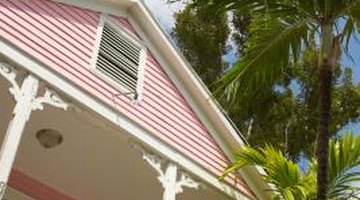When to Run an Attic Fan
The purpose of an attic fan is to remove heated air from the attic space. This serves several purposes, including improving the efficiency of the home and extending the life of shingles and roofing materials. Operating the attic fans on the proper schedule improves the efficiency of the ventilation system in providing a more comfortable and energy-efficient home.
Run the Fan all Day

Run the attic fan during the daylight hours during warm summer weather. Sunlight on a roof produces heat in the attic. Running the fan when the energy of the sunlight is striking the roof removes the heat that accumulates in the attic.
When It’s Hot
If the attic is warmer than the desired indoor temperature and warmer than the outside air, operating the attic fan makes the home more comfortable. Operating the attic vent fans beyond sunset may be necessary during hot weather. This can be a problem if the noise of the fan interferes with nighttime sleep.
Preventing Ice Damage
During the winter, a warm attic can cause ice dams. Warm air rising through the attic can melt snow on the roof. When this water runs down the roof, it freezes when it reaches the portion of the roof above the eaves of the home. This forms an ice dam that prevents future snowmelt from running off the roof. This water backs up and can get under shingles, causing leaks and damage.
Thermostatic Control
Thermostatically controlled fans require adjustment a couple of times per year. During the summer the fan should operate anytime the attic temperature is above the comfort level desired for the indoor living quarters. For example, if the air conditioning thermostat is set to 74 degrees, the attic fan might be set to 75 degrees. During the winter the attic fan thermostat should be set below the freezing point to prevent ice damming on the roof.
Writer Bio
Keith Allen, a 1979 graduate of Valley City State College, has worked at a variety of jobs including computer operator, medical clinic manager, radio talk show host and potato sorter. For over five years he has worked as a newspaper reporter and historic researcher. His works have appeared in regional newspapers in North Dakota and in "North Dakota Horizons" and "Cowboys and Indians" magazines.
Photo Credits
- Jupiterimages/Photos.com/Getty Images
More Articles



